【中国】上海女性の“リラックス”に関するインサイトに迫る
- Release date: Mar 07, 2025
- 1761 Views

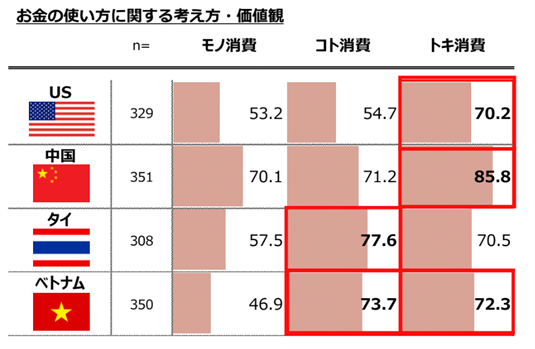
Source: INTAGE survey, “Four-Country Survey on the Use of Money” (conducted in March 2024)
Q2. We would like to ask you about the things that are close to your usual way of thinking. Please answer all that apply. (MA)” responses were combined for each item.
This article, from the seminar held on December 17, 2024, introduces a research methodology that effectively utilizes visual data to understand the latent needs (insights) of overseas consumers for “experiential” and “time-oriented” consumption.
We hope you will find this information useful in developing product ideas and concepts for overseas markets.
"Relaxing" for Shanghai female
Therefore, based on the hypothesis that “relaxing at home” will become an important keyword in the marketing of a wide range of commercial products in the future, we conducted an independent project.
In addition to conventional interview surveys, the project took the approach of observing the real lifestyles of consumers using 360-degree visual data (Consumer Life Panorama) of their living environment. By conducting interviews while formulating hypotheses and understanding the background information surrounding the words spoken by the subjects, we were able to gain insight into the latent needs of consumers, or “insights” that could not be fully explored using conventional research methods.
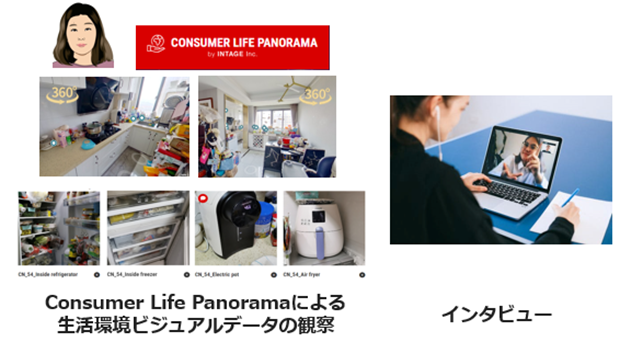
The method used in this study. In addition to online interviews, which are a common method, Consumer Life Panorama was used to observe the subjects' actual living environment online.
Challenges of conventional research methods and the new approach
When deriving consumer insights through research, it is common to interview target consumers and analyze what they want and what they think based on their verbal information. However, this method has the following issues
(1) Only what the consumers themselves are aware of and can verbalize can be elicited, and it is impossible to access dissatisfaction and desires in the unconscious realm, as well as the deeper needs that lie in the background.
(2) Interviews with overseas sei-katsu-sha do not allow developers to gain a deeper understanding of consumers due to the difference in cultural background etc.
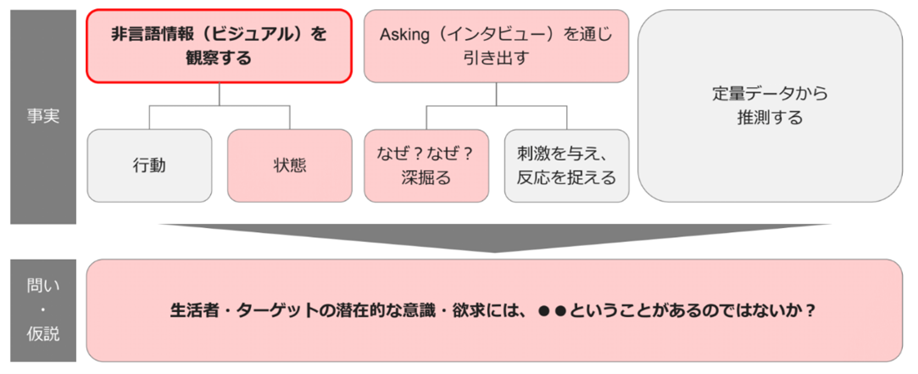
(In addition to the general approach (eliciting through Asking), this time we used the “visual observation” approach to confirm facts and formulate questions and hypotheses.
Therefore, in this project, hypotheses were first formulated based on observations of the subject's nonverbal information, specifically visual data on the living environment and relaxation items, and notions about the facts. Then, we adopted the approach of interviewing the subjects to verify the hypothesis. Through these two steps, we aimed to solve the aforementioned issues.
Insights from three Shanghai women who are good at relaxing
For this study, we surveyed three women living in Shanghai.
All three women are in the upper income bracket in Shanghai, with middle class households earning approximately 14,000 RMB per month.

Profile of the survey's respondents, which included women in three life stages:
DINKS, Young Family (households with preschool children), and
Middle Family (households with children of elementary school age).
All three are employed and are “advanced relaxers” who consciously cope with everyday stresses such as work, housework, and child-rearing. They practice relaxation methods at home that they feel comfortable with, such as listening to music on high-end speakers, buying a simple bathtub and soaking in the bathtub to relieve fatigue (showering is the norm in Shanghai), grinding their own coffee, burning aromatherapy oils, and brewing Chinese tea. (In Shanghai, it is common to take a shower in the bathtub.
There are various ways to relax, which are “things” to do to maintain their mental health, and by observing these practices at home, we were able to derive insights related to the theme of “relaxation for working women in Shanghai. From the next section, we will explain the three insights that were derived from the visual data observation and interviews in this project.
Insight 1) Secure “your own territory” and have Me-Time
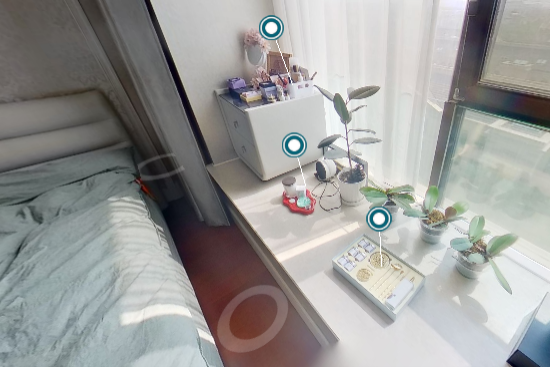
The actual resopndent's home as observed in the Consumer Life Panorama.
The bedside area is lined with skincare and incense items,
houseplants, and other items of her choice.
The majority of people in Shanghai live in apartment complexes, and the living space for each household is not very large. In this context, there is a strong need to secure one's own space and time, and especially during child-rearing, the desire to have one's own territory seems to be strong, as the interior tends to be arranged in consideration of the children. They want to spend time with their family in the living room during the day and spend time in their own room filled with their favorite things before going to bed. I would like to calm my mind by having “Me-Time” (my own time) in a personalized territory, away from the daily routine.
Insight 2) Displaying favorite items to create a careful process
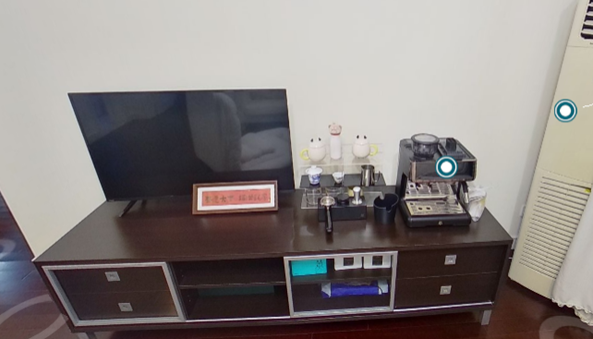
Actual respondent's home as observed in Consumer Life Panorama.
A coffee maker and utensils placed next to the TV stand in the living room.
It may seem random at first glance,but its placement here allows the user to enjoy the brewing process.
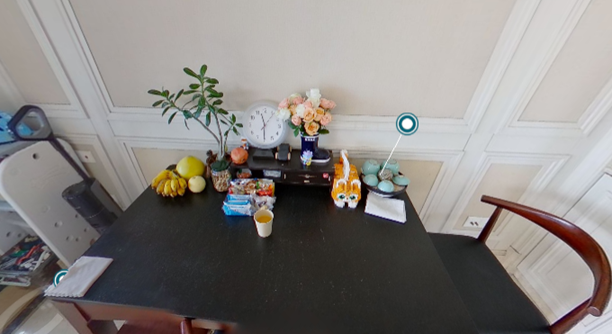
Actual respondent's home as observed in Consumer Life Panorama.
Chinese tea utensils on the dining table. It is left untouched.
The time-consuming process of brewing Chinese tea, which requires many steps, is also an important element of relaxation. The items are displayed as if they were temples, and the “one-step” process is added as a ritual to calm the mind and refresh the spirit.
Insight 3) Snacking for energy recharge and mental wellness
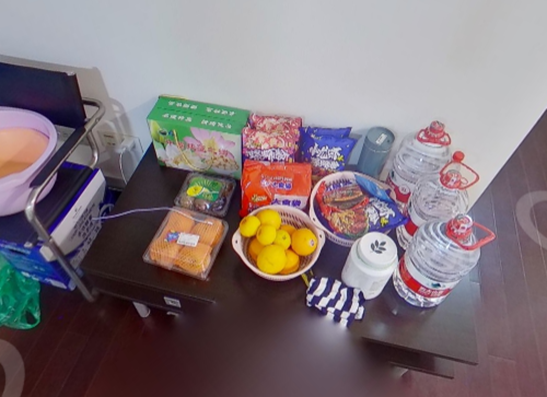
Actual resopndent's house observed in Consumer Life Panorama.
Snacks placed next to the dining table include instant noodles, fruits, etc., rather than sweet foods.
Instant noodles and fruits are always available in the living room and dining room for easy snacking. In Japan, the word “snack” is usually associated with something sweet, but the positioning of snacking that we could read from our subjects was to fill up small stomachs or to recharge energy for the next activity. Although they are concerned about their health, sometimes they choose something stimulating, such as the salty instant noodles that are popular these days. Although it may not be good for their physical health, they feel that unusual and stimulating snacks are necessary to maintain their mental well-being.
Visual data observation is effective for deriving consumer insights

Steps in this program. By conducting interviews with hypotheses based on observations of visual data,
we arrive at insights that cannot be noticed by asking alone.
This time, instead of only interviewing the subject, we implemented an approach in which we first observed the living environment, then developed a hypothesis based on the facts obtained from the observation, and then conducted the interview. Specifically, as shown below, we formulated a hypothesis based on objective questions and findings that emerged from the observation, and then moved on to verification.
-How to spend time in their room: Do they have a room or space for themselves? If not, what are some ways to make it work?
-Place to put relaxing items: Why are coffee makers and tea utensils placed in inconvenient places?
-What is snack for?: The concept of “3 o'clock snack” in Japan is to take a breather, but isn't the concept of “snack” different in the first place?
As a result, finding insights such as those presented so far were obtained.
Formulating hypotheses in advance based on observations of backgrounds, conditions, and environments that sei-katsu-sha themselves are unaware of, and verifying these hypotheses through interviews, leads to deeper insights. In this project, we found that it is possible to take a new approach to derive consumer insights that are difficult to verbalize by using visual data and observation in a multiplicative manner.
What is Consumer Life Panorama?
This is a website-type database that has accumulated visual data on more than 1,000 sei-katsu-sha from 18 countries around the world.The database includes many 3D models of living environments and 2D data of items owned by each sei-katsu-sha, and is useful for understanding overseas sei-katsu-sha, which is difficult to grasp using only letters and numbers.
For more details, click here.
As introduced in this article,
Insights into overseas target consumers can be derived from observation of visual data.
Understanding a wide range of living environments and values, not just categories
To understand the living environment and values of the target consumers in a wide range of categories, etc., this survey can be utilized as a home visit survey that enables observation “without going to the site” and "without time limitations.
It is also being offered as a session program to build insight hypotheses and develop product concepts based on the insights gained from visual data observation.In addition to Intage's Japanese researchers, local researchers join the sessions to support hypothesis building with local perspectives.
-

Author profile
Risa Takahama
After working in marketing research support for Japanese FMCG manufacturers (cosmetics, baby products, food and beverages, etc.) in Asia, Europe, and the United States, from 2019, in her current position, she will develop solutions for overseas marketing research for Japanese companies and disseminate them to the outside world through seminars and other means.
Since the birth of her child, her greatest concern is how to maintain the physical and mental health of her family and herself, and she has been experimenting with various goods and services. -

Editor profile
Chew Fong-Tat
Responsible for creating the Global Market Surfer website.
 Global Market Surfer
Global Market Surfer CLP
CLP